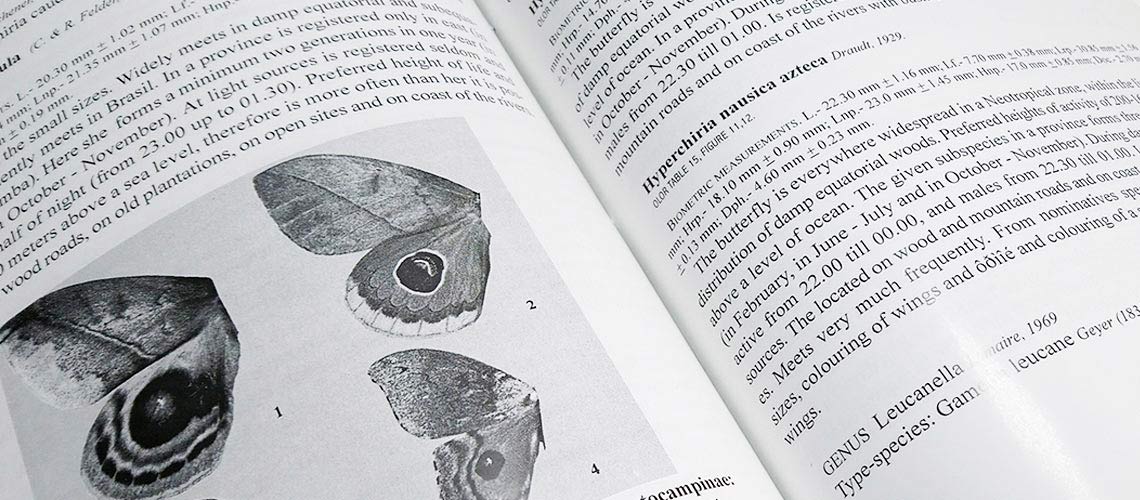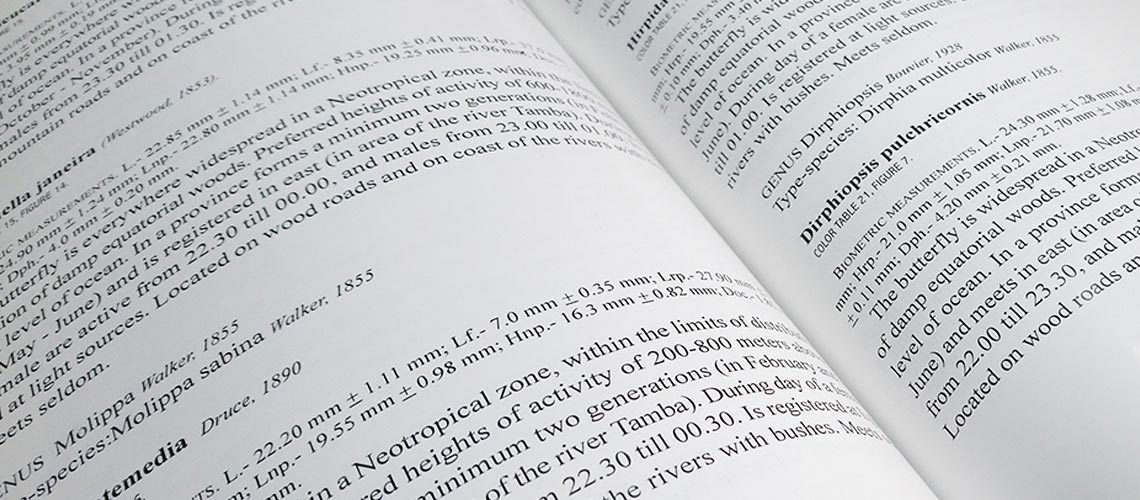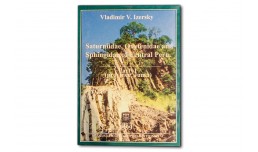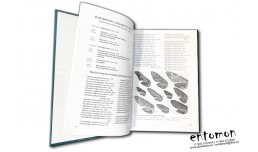Saturniidae, Oxytenidae and Sphingidae of Central Peru. Part 1 - Vladimir Izersky
- Производитель: Entomon
- Модель: EN-3764
- Наличие: Предзаказ
Kiev, Gnozis, 1999, 150 pp. in black and white with color tables, 21 x 29 cm, hard cover, ISBN 966-7569-14-4, good condition

The Sphingidae is a moderate-sized family of approximately about 1800 species on the world level with 79 species and 22 genera occurring in province Junin (Central Peru). This family reaches its greatest development in terms of species and genera in the wet, tropical and equatorial parts of the world, that allows to assume, that in all territory of Peru meets not less than 150-170 species of this family.Peruvian Sphingides are medium to large-sized moths that have relatively long and slender wings and have a long and conical body. Some of the species I are exclusively diurnal (for example - genus Eupirchoglossum and Aellopos.I some are crepuscular (for example some species of a genus Enyo), and others f are nocturnal (for example - genus Adchemarius and many other).

Morphological characters of the Sphingidae are as follows. The lower margin of the clypeus may be somewhat produced as a rounded projection. The pilifer is varyingly clothed with setae (either setae of one length or of two lengths). The tongue varies from being several times the length of the body (for example - species, representatives of genus Neococytius, Cocytius, Oriba) to veiy reduced (species of genus Enyo, Manduca). The antennae are piliform, setiform, or clavate. In a very few genera the antenna is bipectinate.The eggs are rounded or slightly flattened with little surface sculpturing. The micropyle is lateral. Figure around to micropyle can serve a systematic attribute. Eggs are usually laid singly but occasionally.The larva is cylindrical or tapering on the anterior segments. The head is rounded or triangular, usually rounded in the first instar. The eleventh segment or clavate. In a very few genera the antenna is bipectinate.The eggs are rounded or slightly flattened with little surface sculpturing. The micropyle is lateral. Figure around to micropyle can serve a systematic attribute. Eggs are usually laid singly but occasionally.

The larva is cylindrical or tapering on the anterior segments. The head is rounded or triangular, usually rounded in the first instar. The eleventh segment has a caudal horn or the horn may be replaced with a buttonlike structure. Surface of larves smooth or little bit rough. The legs are normal.
The pupa is fusiform with the head often distinctly narrower than the thorax, and the fifth and sixth segments are movable. The wings are long and usually pointed. The cremaster is prominent and usually triangular in outline (often slightly bifurcate distally). The scar of the caudal horn is often visible on the( dorsal surface of the eighth abdominal segment. Pupation occurs in a chamber in the soil, a loosely spun cocoon at the surface of the ground or rarely in a loosely spun cocoon above the ground.








